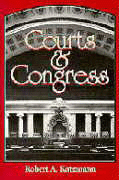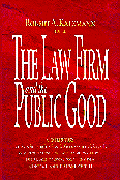The Trump administration’s policy of separating children from parents who cross the southern border seeking asylum—and Attorney General Sessions’ limiting the grounds on which to grant asylum—draw attention again to the nation’s immigration courts, where many asylum claims get adjudicated. At the same time, the administration is making it more difficult for them to deal with non-citizens who claim that our complicated immigration laws allow them to remain here by imposing uniform case-completion quotas and deadlines on all immigration judges.
Federal district courts hear criminal charges of illegal entry, while the Justice Department’s over 300 immigration judges, using authority delegated by the Attorney General, decide whether individuals (“respondents”) can remain in the country despite Department of Homeland Security claims that they are here without authorization. Respondents range from infants separated from their parents to hardened criminals in detention facilities to students who have overstayed their visas to those seeking refuge from persecution and worse.
Simply put, there are not enough judges. Pending cases have gone from 186,000 in 2008 to almost 700,000. To its credit, the Justice Department continues its predecessors’ push for more judges.
On the other hand, in April, days after announcing the “zero-tolerance” policy that undergirds the family separations, Sessions said “We are now directing [immigration judges] to complete at least 700 cases a year. This is about average.” It is, but the “average” is meaningless because immigration courts are highly diversified. Based on the Department’s most recent published statistics (2016), almost two thirds of the courts had per-judge case completions below 700 and two-fifths were below 500. Individual courts’ per-judge completion rates varied from under 300 in a few courts to well over 1,000 in others.
Varying completion rates partly reflect judges’ different case-management skills but also considerable variations in the demands that different case types impose. Some courts’ caseloads mostly involve detained respondents with serious criminal histories who clearly have no right to be here. Most of those courts move cases quickly. But courts where many respondents claim some form of statutory protection—“relief”—from removal are less likely rocket-docket candidates. Nationally, the percentage of relief-claim cases is 39 percent, but it ranges from 14 percent of one court’s cases to 73 percent of another’s. Asylum is one form of relief. Cases presenting those claims are 25 percent of the caseload nationally but range from 5 percent to 54 percent in individual courts. Relief-claim cases are generally more demanding than others, but the Department has no “case weights” that enable other court systems to quantify the relative burden of various case types.
There are other differences. About 40 percent of respondents don’t have lawyers, and by law the government can’t provide them. So, judges adjourn proceedings temporarily (often for months, given case-docketing pressures) while respondents look for legal help. Judges must protect the due process rights of non-represented respondents even while serving as neutral arbitrators. And the regional courts of appeals, which hear appeals from the immigration court system, have established different requirements for removal proceedings within their circuits.
Despite these different caseloads, the Department has published a one-size-fits-all requirement that judges complete 700 cases per year, have no more than 15 percent of decisions sent back by the Department’s review board or the courts of appeal, and meet procedural deadlines for quick case completions. Judges whose performance doesn’t satisfy their administrators risk job loss or relocation. (Department officials who administer the courts refer to themselves as “management,” suggesting that judges who decide cases that sometimes involve what Justice Hugo Black called “punishment of the most drastic kind” are akin to assembly line workers.)
The 700-case completion requirement won’t much affect courts where case completions exceed that number. In courts with more demanding caseloads, judges will often face a choice: protect their economic well-being by cutting due process corners or serve as independent adjudicators.
Democracies structure judicial independence protections precisely to keep judges out of that predicament. (Even long-standing Department policy tells immigration judges to “exercise their independent judgment and discretion and … take any action consistent with their authorities under” statutes and regulations.) To be sure, democracies balance judicial independence with judicial accountability. Performance measures are key ingredients in promoting effective, efficient tribunals by encouraging peer and public pressure to meet them. But good performance measures rest on solid analysis. The National Center for State Courts’ “Trial Court Performance Standards” reflect several years of research and consultation. It is not clear what undergirds the Department’s performance measures other than a desire to tether judges to numerical criteria.
Sessions has argued that many asylum seekers file “fake claims,” and surely some do, which is why immigration judges need time to separate legitimate from ill-founded claims.
The case-completion standards will nudge some judges to cut corners to close cases quickly and trust the appellate process to sort things out. More respondents will appeal to the Department’s Board of Immigration Appeals, and then to the courts of appeals. When the Bush administration reduced the Board’s size and streamlined its procedures, the law of anticipatable consequences took effect: immigration removal cases shot up from three percent of the 2001 national court of appeals caseload to 17 percent in 2006, and much more in two circuits—the east-coast Second and the west-coast Ninth.
When the Department’s rules take effect in October, look for a repeat of that phenomenon, further deterioration of the broken immigration court system, and renewed proposals to take the courts out of the Justice Department.
Congress uses executive branch tribunals to reduce the dockets of judicial branch courts and encourage efficient, expert decision-making. Ironically, the Department’s rules will reduce overall efficiency, discourage expert decision-making, and enlarge judicial branch dockets.
The Brookings Institution is committed to quality, independence, and impact.
We are supported by a diverse array of funders. In line with our values and policies, each Brookings publication represents the sole views of its author(s).











Commentary
Amid turmoil on the border, new DOJ policy encourages immigration judges to cut corners
June 18, 2018